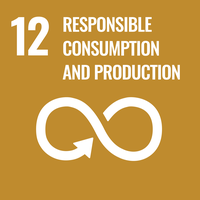Controlling bacterial cell volume
|
Project 3: Controlling bacterial cell volume
|
    |
|
Cells of Rhodobacter sphaeroides expressing the yellow fluorescent protein mVenus
Through genetic modification and control over transcription of a specific set of about 20 genes, the cell length can be increased by up to 100 times (from 1 µm in length up to 100 µm). © Matthew McIntosh |
Cupriavidus necator is THE bacterium most used for industrial production of PHB (polyhydroxybutyrate), a fully biodegradable polymer that can replace some forms of plastic in every-day-life. Under the right conditions, this bacterium stores PHB as an energy reserve. The bacterium is good at storing PHB. Up to 90% of its cell volume is filled with PHB granules when grown on high energy substrates such as glucose. This is remarkable given that the cell also needs space for its DNA, RNA, and proteins, including ribosomes. So how can C. necator possibly produce even more PHB? This project looks as using controlled gene expression to force the cells to increase their length, i.e., to increase the volume of the cell. Would this increase their PHB production? Increasing cell size opens the door to many other interesting aspects, such as lipid production (membrane/cell wall components) for biofuels. |

